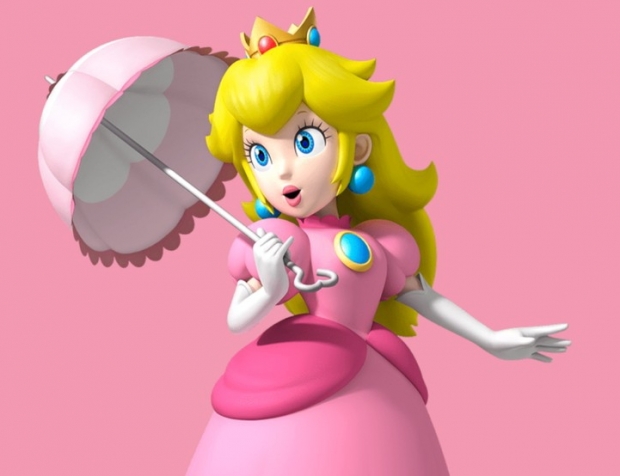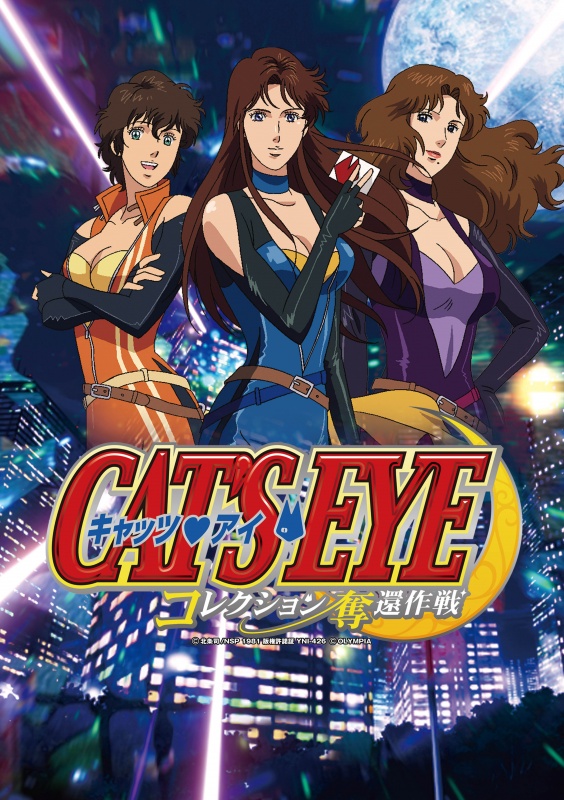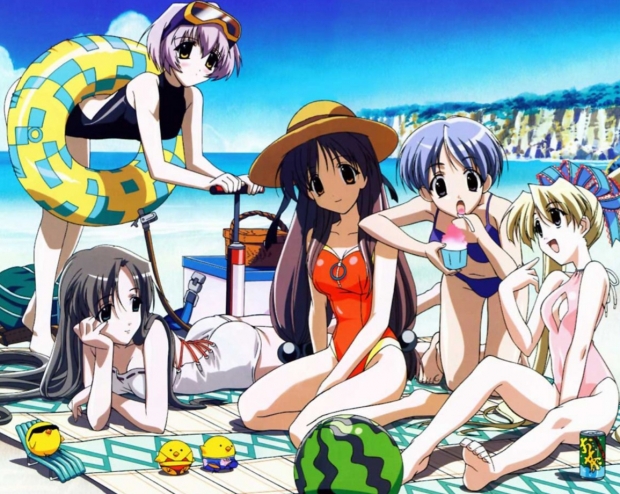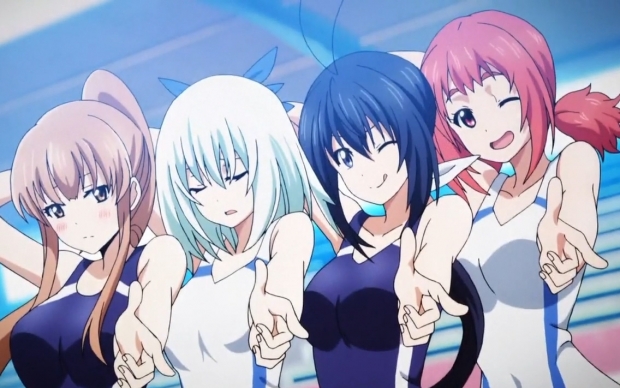An often over looked trope in anime is the art of "Earning your happy ending"; this is where the main character goes through hard ships around some of the most mean spirited people imaginable constantly wanting said main character to leave or give up, there's a right way and a wrong way of doing this.

Case Study 1 - Kaleido Star
Sora Naegino dreams of being a great star on the Kaleido stage but her boundless optimism doesn't work with the professionalism displayed by the troupe, one by one she has to earn the respect of each character as the series goes on culminating in one of the best finales in anime with season one's final episode but the mean spiritedness continued when May Wong shows up along with Leon.
With the exception of May, Kaleido Star has the right balance to make all the mean spirited moments worth sitting through, there's a big difference between being fired and being told you should leave which is present through out the whole series but it's for Sora to ultimately decide to balance passion and professionalism, feelings ain't enough in this business.
Case Study 2 - Sakura Wars TV
Sakura Shinguji enters a fairly hostile environment at the Imperial theatre both in performing at the theatre and combat;
She has to earn the respect of her peers individually, she even played as Cinderella for one of her performances which isn't very subtle.
The issue is that it's too mean spirited, the official canon of the games suggests that Sakura initially has trouble fitting in more to her own lack of confidence rather than anything the rest of the cast put her through, the TV series which is loosely canon just makes her out as worthless, Sakura's situation is way more complicated than Sora's as her case is more living up to a legacy she hasn't quite grasped rather than a dream of being a star, there was no reason to be this horrible to her.
Case Study 3 - Smile Down the Runway
A series that I'll be reviewing by the end of the week features a designer and the model trying to break into the industry.
Ikuto the designer has potential but quickly finds out how high the bar is to get to the top.
Chiyuki the model is disadvantaged by her height which is too short for being a super model but try telling her to stop and she becomes insufferable.
It's two contrasting characters journeys, one is the right way, the other is the wrong way.
Ikuto is forced to learn that just because he's good at making clothes doesn't mean it's a free pass into the industry, it's pretty cutthroat but Ikuto learns quickly enough to adapt.
Chiyuki on the other hand doesn't really earn her happy ending, she does take things seriously and works hard to achieve her dream but came across as really patronizing at times.
I'll go into more detail on the review.
Case Study 4 - Love Live
Constantly having boundless optimism and pretty much recruiting all of your detractors makes the original Love Live the worst example of this, Honoka Kosaka barely made any effort to reach the top and only through forced drama bombs that she even had to do anything other than just being an insufferable flower child.
Case Study 5 - Shonen Anime
It's not the same for your Narutos, Midoriyas and Luffys, granted Midoriya would fit more into this category and season 1 Naruto definitely has shades of this but the ebb and flow of a typical shonen anime quickly makes the hardships associated with this trope more redundant as they climb the hierarchy.
Damsels haven't really been a thing for some time, the most prominent one still being used today albeit less and less is Princess Peach, but when you really break it down, the damsel in distress trope really doesn't have as many entrants as you think.
Starting with the obvious example is Princess Peach.

By extension, all but Rosalina of the Mario franchises leading ladies have been in that role at some point, it only happened once with Pauline and Daisy both being kidnapped by other enemies.
With Pauline it's Donkey Kong the first and current, (It's complicated) in her defence it's very much a King Kong scenario, Daisy had to deal with Tatanga an alien invader with more than enough tech and army to take over Daisy's Kingdom of Sarasaland.
Going back to Peach, she's been shown at many points in her career as early as her 1986 ova appearance that she'll always try and escape herself, sometimes rescuing Mario instead, Bowser has an army, access to magic, very dangerous fortresses and is the strongest amongst a wider range of Nintendo villains, Peach just has an army of Toadstool people who are practically all pacifists, to spell it all out, her kidnapper is much better prepared than most.
Zelda is another one but there are more than enough moments in her canon where she directly or indirectly helps Link as well as shown to be pulling the strings in Link's quest, very rare that any Zelda is a damsel.
Despite her design and a role as many different princesses, Barbie has never been a damsel once as far as I can tell, an interesting fact is that Barbie is never depicted as married, this is because Mattel wanted those who bought the doll to decide themselves what Barbie should be. You actually have to kill a Disney Princess to make her a damsel as done with Snow White and Sleeping Beauty, Cinderella is excused as hers is more abusive parent/guardian.
On to some examples of damsels who really shouldn't be damsels.
My favourite punching bag Fuko of Flame of Recca has been brought up more than enough times, she's gullible, has a bad habit of wandering off and getting trapped and wastes her powers leaving her even more helpless and she's supposed to be a fighter, Yanagi who does get kidnapped in the second half as she's only a healer amongst some really powerful people does a better job of being strong as she willingly allowed herself to be the offering in the tournament, has risked herself plenty of times to heal others and resisted Mori Koran for as long as she could before being sealed as a healing battery, she was even the catalyst for his defeat.
Bleach has both Rukia and Orihime, Rukia is excused as she had most her powers drained and was being sentenced to death, less damsel more prisoner.
Orihime has no excuse as her powers are often said to be more potent than most yet she proved useless with them on many occasions, she also barely does anything about her own kidnapping just accepting that Ichigo will rescue her.
A brief mention of Flute from Violinist of Hameln who often declares herself the most pathetic heroine in anime; Flute is practically She-Hulk compared to how useless Isanami is from Brave 10, Isanami will need her own entry to explain, if you thought I was too harsh about Fuko and Orihime, you ain't seen nothing yet.
On the surface of it, those who are often called out for being useless damsels are actually more than capable women who are up against opponents with better preparation and overwhelming strength.
Those who would slot into that role subvert it.
Those who shouldn't be a damsel in the first place are the characters that really should be criticised for this trope.
Welcome to another S-Tier Analysis, this time covering the sexy theives of Cat's Eye.

Stealing with a Purpose
The Kisugi Sisters are more than just a bunch of art thieves, it would be so easy to cast them as a bunch of thrill seekers who do it because they can like Rouge the Bat or Carmen Sandiego, instead they only steal back in most cases their father's art pieces in order to find him, funded by an associate and under the unsubtle disguise as a coffee shop, the Kisugi sisters use every trick in the book to avoid the police as well as the various crime lords who hold on to the art pieces, sometimes they even compete with other thieves including Lupin the 3rd.
A Work of Art in Animation
In order to get round much of the 80s animation, season 1 was styled in a way that it felt like a painting while watching, the set pieces with the music and allure of the three leads make every episode a work of art in it's own right creating an aesthetic unique to them, season 2 loses some of that art style as it's budget increased but more than makes up in sex appeal.
Three Women with Perfect Personalities
I've mentioned before that Rui is the perfect sexy woman, she knows how to use her charms to win favour in any given situation, presenting herself with a rich adult sophistication and never feels the need to find love and romance as she feels perfectly content with herself whether it be making a coffee or infiltrating a casino, she's also the voice of reason for her sisters and even Toshi.
Hitomi plays off an interesting dynamic as her fiancee is the very detective chasing them, as the lead girl in most thefts she sometimes has to think outside the box to hide her identity, she does come across as moody but considering how clueless Toshi can be sometimes, it's justified. Sometimes she enjoys the idea of being chased down by her fiancee.
Ai is the youngest and starts off the series still in school, a very subtle hint of her age (16) is indicated in her outfit being way more covered up than her two older sisters, nice touch from the animators, Ai is the tech of the group and provides the most gadgets to escape every heist, but still impulsive and childish which doesn't always give her what she wants.
All three exhibit strong personalities and the correct weaknesses to compliment them, all three I consider some of the best written women in all of anime far exceeding most of the more well known female characters in the medium.
Toshi is a Better Foil Than You Think
It's easy to look at Toshi as the useless male in a world of strong women but his dynamic with Hitomi and his Zenigata personality, he's actually a great detective just that his opponents are leagues better than him, this comes around frequently when he ends up failing to capture Cats but takes the win for capturing the criminal who held the painting, sometimes his appearance even helps the sisters.
40 Years and Still a Hit
TMS have been running the whole 2 seasons on their YouTube channel on a one episode a week release basis, it found a new fanbase in a group tired of shonens and harems and looking for something different to the normal and Cat's Eye ticks all those boxes.
Experimental can often mean taking a franchise out of it's home and into another genre, this was a short trend in the early 00s when Hentai Games were translated into wholesome anime titles, one such title being Happy Lesson.

I see you're into Teachers
The humble school teacher became a popular fixture of fan service at the time as the likes of Azumanga Daioh and to a lesser extent Onegai Teacher were being released to high acclaim, Happy Lesson took five teachers along with a couple of students and adopted sisters to surround you the protagonist, the art style very much designed at a higher quality as is Hentai games of the era.
From nothing Protagonist to misunderstood Delinquent
The anime lead Chitose is a troubled individual who was left with only his parent's house after they pass away, while his oldest adopted sister Hazuki looks after the younger sister Minazuki inbetween tours as a pop star. Seeing him struggle are five teachers beginning with Mutsuki Ichimonji the homeroom and languages teacher who decides that Chitose needs a mother figure in his life to get through high school fearing that Chitose may end up in prison or worse. This is the foundation of a wacky story as each mother brings something to the table, a far cry from simply dating teachers to bed them.
Each Teacher brings a unique character
Each teacher brings a different character to the table.
Mutsuki Ichimonji is sweet, caring and the most pro active but is not afraid to use emotional blackmail or to push an almost dominatrix like approach to both teaching and mothering.
Kisaragi Ninomai is basically Rei Ayanami as a science teacher, her approach is from an experimental side to see if being a mother can give her meaning to her existence as she claims to be not of this world, most of the strange moments in the show revolve around her.
Yayoi Sanzenin is a shrine maiden turned school nurse, her approach is more on the side of trying to heal Chitose's soul which can border on obsession, next to Mutsuki she's the most popular woman in school for many adolescent males.
Uzuki Shitenno the art teacher likes to be the fun mother who expresses herself through cosplay and acts closer to an older sibling, now that I think about it, she's most like a real life Otaku mother.
Satsuki Gokajo is very rambunctious and in your face, she's very much used to large families and being in chaotic loving environments, she basically wants to recreate what she had growing up for Chitose.
Throw in a little sister, a big sister, a tsundere school girl, a reverse trap rival and a strange science girl and you got one of the most impressive harem line-ups in anime until Nisekoi comes out.
Happy Lesson is why I prefer older Anime Women
The fact that the so called harem are mostly adults between 18 and 30 with fleshed out personalities with a mature presence made for an experience that made me appreciate older female characters more than the teenage characters in more popular anime, I mentioned in previous entries about Cat's Eye character Rui Kisugi and Pokemon's Lorelei are sexy women for showcasing a mature aura that many younger female characters lack, the same can be said for Happy Lesson's five teachers.
The everyone wins ending
When Chitose finally graduates at the end of the anime, a predicament is presented to the five teachers/adoptive mothers, seeing as Chitose is now a legal adult, it would become harder to hide the fact that he lives in a house with five unmarried women which became an integral part of the final OVA, the solution after a welcomed heart to heart between Chitose and Mutsuki one of many emotional moments in it's run, all the teachers transform into brides and decide to all marry Chitose, a bizarre ending yet still wholesome in delivery.
Making a comeback
As anime faces the stigma of teenage characters and their less than wholesome appearances and a law change upping the age of consent this year in Japan, there's been a rise in the number of young adult characters in anime making it okay to declare them waifus and husbandos, Miss Kobayashi's Dragon Maid, The Saint's Magic is Omnipotent and My Senpai is Annoying are just a few notable titles to use working young females as leads, even more extreme examples like Keijo at least makes the entire cast 18 years old by default. I haven't even touched the quiet revolution of the milf and dilf characters.
For Happy Lesson it was way too ahead of it's time, to capture any kind of popularity but had a big enough presence from the short lived Dreamcast era to warrant the game and plenty of heavy promotion with a number of high quality anime art pieces much like the one in this review.
A new approach for these analysis reviews is that I class these as S-Tier anime, as there are at least 50 anime I judge as S-Tier, expect more to grow from this.

Keijo's Origins
Essentially Keijo is an extreme version of a common pool game played all over the world at pool partys, the object of the game is without using arms or legs only your butt and for women breasts as well, is to knock the person into the water or fall over on the land pontoon; Keijo turned it into a high stakes sport battlefield with the same rewards as any other professional sport.
Clever Fan Service
It's easy to look at this and see an anime that only caters to the male gaze, something that a lot of crap reviewers tend to point out but it's much more clever than that.
The extended cast sits at roughly 40 characters, only three of them are male, a reporter, the father of one of the Keijo players and an unseen commentator, none of which impact the story at any point.
It helps that all the girls are doing this sport by choice and treating it as such gives a much more empowering feeling, it's fan service done correctly when I'm more compelled by the action than the skin, and before you ask, all the characters are 18 years old minimum.
If there's anything problematic it's probably the lesbian character pushing her luck with some of her attacks, but I suppose the fan service has to exist somewhere.
No Body Shaming Here
The beauty of Keijo is that all body types are welcome, yes they make it clear that high athletic ability is required and being able to at least swim for a successful career but is not restricted by body type, lead character Nozomi is a gymnast for instance while other characters are anything from Judo, body building, Yoga, dancing and even Sumo, some just have the right desire or just do it because they enjoy it.
It's a Real Sport in Portugal
The Portuguese turned Keijo into an actual sport, the main difference though is that it looks a lot safer compared to it's drunken party origins with life belts and jackets which make it look closer to sumo costume battles, but the real reason is that the human body isn't designed to twist in certain ways.
Don't Try This At Home
I mentioned that Nozomi is a gymnast so her incredible wind ups for doing the Vacuum Butt Cannons are akin to doing floor tumbles in the Olympics, but to actually perform the Vacuum Butt Cannon would require not just a perfect wind up of tumbles on loose slippery pontoons but to twist your hip so violently that it risks a horrible injury, this is true in the Keijo universe as well, I'm also certain that breasts are not designed to take multiple hits either, this is why the real life version has more padding.
Meant for Something Greater
It never lasted more than one season but it had the potential to go much further, as it could easily have become a world wide phenomenon, the fact that one country turned it into a real sport is proof of that but short sighted reviewers and executive meddling ended the show before it could achieve that, it's a shame as it achieved so much more for female viewers than even designated shojo series.





